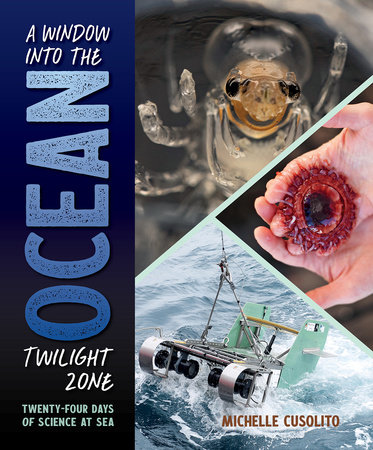
I’m excited to welcome award-winning STEM author Jennifer Swanson

to the STEM Tuesday blog today. She’s going to share her book journey with us.
Get ready to take a deep dive into the mysterious world of an underwater forest!

The Lost Forest: An Unexpected Discovery Beneath the Waves (Millbrook Press, April 2, 2024)
A Junior Library Guild Selection
“A detailed, thought-provoking account of the work of scientists.”―Kirkus Reviews
“This book details the fascinating story of the dedicated scuba divers and their work to locate and preserve the area. No one has ever found such a unique habitat, and hopefully, no one will be able to disturb it as scientists work to keep it safe. Readers who enjoy earthly mysteries will enjoy this title. Reviewer Rating: 5″―Children’s Literature
“Swanson, who shadowed the scientists, documents their methods and discoveries in an appealing narrative, complemented by photos of the scientists in action. In the process, readers learn such amazing details as the dangers of diving, organizing experiments, gene sequencing, and finding new species.”―Booklist
ST: Thanks for being here, Jennifer. What can you tell us about how your book, The Lost Forest, came to be published?
JS: Thanks so much for having me. I’m thrilled to share my story. Here goes:
This book was tons of fun to research and write! Why? Because I got to hang out with two amazing science teams and watch them in action as they researched an amazing discovery under the sea. My book journey is a lesson in making connections with people. I am lucky enough to be good friends with one of the scientists that was an expert on my Astronaut-Aquanaut book. His name is Dr. Brian Helmuth, and he works at Northeastern University and Nahant Marine Science Center. I’ve known Brian since 2016 when I reached out via email to ask him to be an expert on
my Astronaut-Aquanaut book and we have stayed in touch since then.
In April 2020, he was a member of a team of scientists from Ocean Genome Legacy
Center and the Nahant Marine Science Center at Northeastern University that had received a
grant from the National Science Foundation to dive on an ancient underwater forest discovered
off the coast of Alabama.

Back to the email I received from Brian in April 2020, he asked me if I’d be interested in writing a children’s book on the team’s research journey.My response was, “Would I? Absolutely!”
So, Brian talked to Dr. Dan Distel, the principal investigator of the project and suggested
that I become an ad hoc member of the team. They both agreed, and the rest, as they say, was
history. I got an inside view of how a real science team conducts their research. I was SO
excited!

Why is this forest so awesome? This forest isn’t just any forest, it’s composed of cypress
wood. Cypress doesn’t normally grow in water, so it makes sense that this forest was once on
land. Researchers determined that the forest was approximately 60,000 years old. Talk about
As an adjunct member of the team, I was invited to go on one of their research trips into
the Gulf of Mexico—to go out to the real site (kept secret so that furniture companies wouldn’t
harvest it to make furniture).
Unfortunately, we all know what happened in 2020 (covid!), so the dive scheduled for September 2020 didn’t take place. Instead, the team had virtual meetings todiscuss what they had learned from their dive in late 2019. I was invited to participate in several of these meetings. It was so thrilling, seeing the photos, the videos, and hearing the team discuss their findings.

The team was awesome! I interviewed them all and they gave me access to all of their
reports, photos, and videos. It was so exciting to get an inside look at how scientists conduct
research in the field. The entire team helped to edit the book and were with me every step of the
way. They were SO great to work with!

I’m beyond proud to tell their story.
So, I invite you all to check out the book! Millbrook Press put QR codes that lead the
reader to the actual videos that the scientists took while diving. It’s incredible!
Watch my book trailer HERE
You can read more about the book and purchase it HERE
To learn more about me and the rest of my books, please visit my website:
https://jenniferswansonbooks.com/
Also, check out my podcast for kids and families. We interviewed Brian about the
Underwater Forest https://solveitforkids.com/podcast/episode-1-mapping-underwater
ST: Thanks for sharing your story with us, Jennifer
JS: It was my pleasure. Science ROCKS!






















